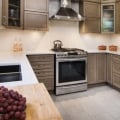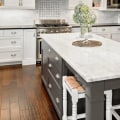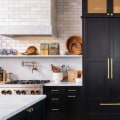The quest for the best kitchen cabinets often leads discerning homeowners and designers around the globe, as the pinnacle of quality and craftsmanship varies by geographical location and the traditions of cabinetmaking practiced there. Notably, some regions stand out for their exceptional contributions to the cabinetry industry, each offering unique styles, materials, and construction methods that cater to a wide range of tastes and requirements.
In the United States, renowned for its versatile designs and robust construction techniques, cabinetmakers often use solid wood, plywood, and high-quality hardware to ensure longevity and functionality. American-made cabinets are prized for their rigorous quality control standards, innovative storage solutions, and customizable options which make them a top choice for homeowners seeking a blend of practicality and aesthetics. Similarly, Canadian manufacturers are celebrated for their eco-friendly practices and use of locally sourced materials, which not only contribute to sustainability but also offer durability and resistance to wear. Canadian cabinets often feature a blend of traditional craftsmanship and modern technology, making them a favorite in North American homes.
Crossing the Atlantic, Italian kitchen cabinets are synonymous with luxury and modern design. Known for their sleek, contemporary lines and high-end materials, such as lacquered finishes and tempered glass, Italian cabinetry makers blend art and function in ways that transform a kitchen into a dynamic living space. German kitchen cabinets also hold a reputation for impeccable engineering and precision. With a focus on ergonomic designs, German cabinets are designed with functionality in mind, incorporating advanced hardware systems that offer smooth, effortless operations.
Scandinavian design, which emphasizes minimalism, simplicity, and functionality, also makes a significant impact on kitchen aesthetics. Swedish and Danish cabinets are particularly noted for their minimalist design and efficient use of space, incorporating sustainable practices and materials that are as environmentally conscious as they are visually appealing.
However, the quality of kitchen cabinets is not only determined by the country of origin but also by the manufacturer's attention to detail and their commitment to using high-quality materials and construction methods. Factors such as the type of joinery, the thickness of the materials used, and the finish applied are crucial determinants of how well cabinets will perform over time and under varying environmental conditions.
In environments where humidity and moisture are prevalent, such as in areas close to bodies of water or in regions with high humidity levels, the choice of material and the quality of construction become even more critical. In such cases, homeowners must consider water-resistant materials and finishes to prevent warping, swelling, and mold growth. For instance, in areas prone to water damage, consulting with First Choice Water Damage Experts could provide insights into the best materials and finishes that are specifically designed to withstand such challenging conditions.
Furthermore, the advent of global shipping and e-commerce has made it easier for customers worldwide to access high-quality kitchen cabinets from prestigious international manufacturers. This accessibility allows for a greater exchange of design philosophies and techniques, further enriching the global market for kitchen cabinetry. Yet, despite the broad range of options available internationally, many homeowners still prefer to source their cabinets locally, supporting local businesses and reducing the environmental impact associated with long-distance transportation.
Ultimately, the best kitchen cabinets are those that not only meet the aesthetic and functional needs of the homeowner but also stand the test of time. Whether opting for the sleek sophistication of Italian designs, the robustness of American craftsmanship, the precision of German engineering, or the sustainable appeal of Scandinavian styles, the choice largely depends on personal preference, budget, and specific environmental considerations. As the demand for quality and sustainability continues to grow, cabinet manufacturers worldwide are increasingly focusing on both innovation and tradition to meet these diverse needs.


